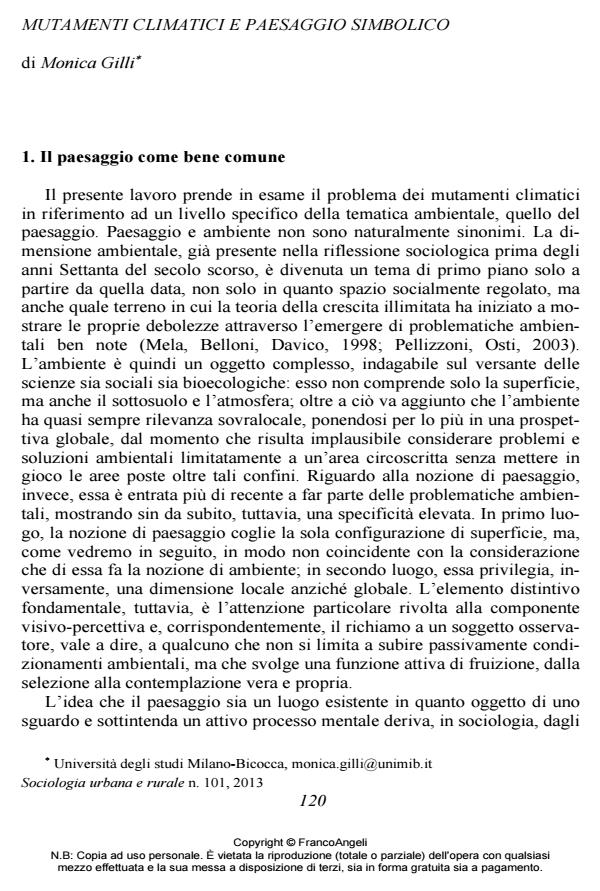Mutamenti climatici e paesaggio simbolico
Titolo Rivista SOCIOLOGIA URBANA E RURALE
Autori/Curatori Monica Gilli
Anno di pubblicazione 2013 Fascicolo 2013/101
Lingua Italiano Numero pagine 15 P. 120-134 Dimensione file 226 KB
DOI 10.3280/SUR2013-101010
Il DOI è il codice a barre della proprietà intellettuale: per saperne di più
clicca qui
Qui sotto puoi vedere in anteprima la prima pagina di questo articolo.
Se questo articolo ti interessa, lo puoi acquistare (e scaricare in formato pdf) seguendo le facili indicazioni per acquistare il download credit. Acquista Download Credits per scaricare questo Articolo in formato PDF

FrancoAngeli è membro della Publishers International Linking Association, Inc (PILA)associazione indipendente e non profit per facilitare (attraverso i servizi tecnologici implementati da CrossRef.org) l’accesso degli studiosi ai contenuti digitali nelle pubblicazioni professionali e scientifiche
I mutamenti climatici influenzano non solo i paesaggi naturali, ma anche i paesaggi simbolici, ossia quelle entità paesaggistiche che, grazie a innumerevoli conferimenti culturali, sono diventate "icone". In questo paper vengono discusse due componenti presenti in molti paesaggi simbolici - la coltre di ghiacci e nevi perenni e l’acqua - che si sono rivelate particolarmente sensibili a tali mutamenti, e si avanzano alcune ipotesi sulle reazioni sociali alla "degradazione" che ne risulta sul piano visivo.
Parole chiave:Paesaggio simbolico, acqua, icone, cambiamenti climatici, luogo di identità, turismo
Monica Gilli, Mutamenti climatici e paesaggio simbolico in "SOCIOLOGIA URBANA E RURALE" 101/2013, pp 120-134, DOI: 10.3280/SUR2013-101010